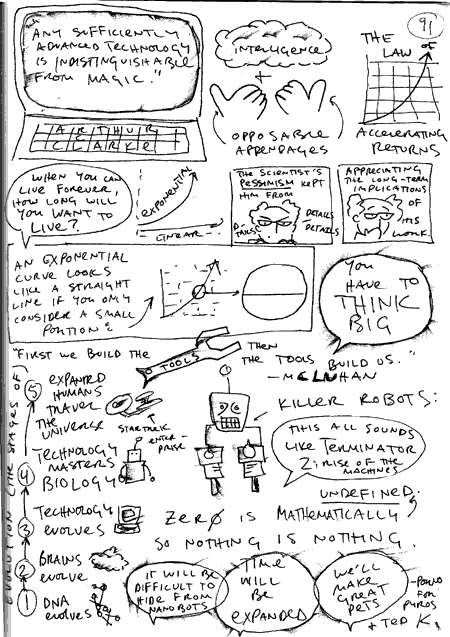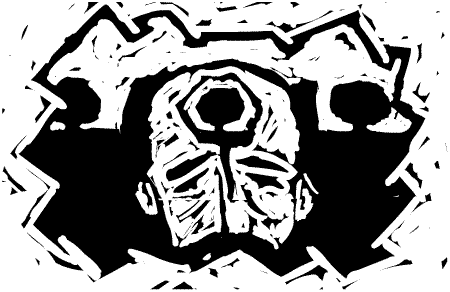
I was in Circleville this weekend. More posts this week…
- I’d never heard of Bob Greene before. Here’s a fascinating, long article from Esquire.
- Oxford Press article on the Western situation.

I was in Circleville this weekend. More posts this week…
I’m such a dunce when it comes to Science Fiction. But lately I’ve found that reading the NY Times science pages–or books on String Theory or The Singularity–gives me so many more ideas for stories and comics. Why is this?
Then I came across a great Vonnegut essay about science fiction. He says the best way to get labelled a science fiction writer “is to notice technology”:
The feeling persists that no one can simultaneously be a respectable writer and understand how a refrigerator works, just as no gentleman wears a brown suit in the city. Colleges may be to blame. English majors are encouraged, I know, to hate chemistry and physics, and to be proud because they are not dull and creepy and humorless and war-oriented like the engineers across the quad.
He came into science fiction by accident, observing the small-town GE plant he worked in, full of machines. “I supposed that I was writing a novel about life,” he writes, “about things I could not avoid seeing and hearing in Schenectady, a very real town, awkwardly set in the gruesome now.”

On Don’s recommendation, I’m reading Ray Kurzweil’s book, THE SINGULARITY IS NEAR, which is all about the exponential growth of technology, and humans transcending their biology. Here’s a good beginning essay on the Law of Accelerating returns to give you a feel for the book. I can’t read the book without thinking about Terminator 2. these are my notes.
Also: the Future of Western College is uncertain. But based on the the Provost’s Report, it don’t look good.
And: is religious belief a function of evolution? I’ve always thought, and this guy does too, that if there is an eternal heaven where we can live forever in tranquility, it probably resembles something more like a hell.
Eternity is a long, long time, you know.

Suggested steps for dealing with the upcoming apocalypse:

blown-up panel from my new comic
This site participates in the Amazon Affiliates program, the proceeds of which keep it free for anyone to read.